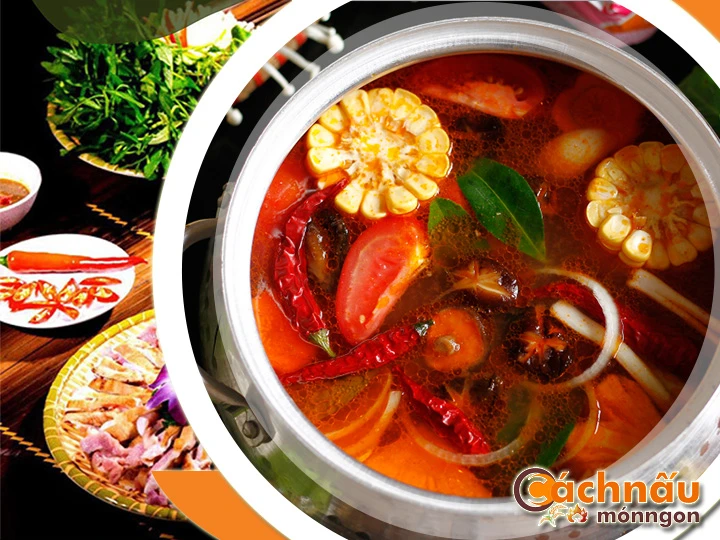Enjoy the Traditional Rabbit Hot Pot Ideas to Enjoy - Lẩu thỏ
Enjoy the Traditional Rabbit Hot Pot Ideas to Enjoy - Lẩu thỏ
Blog Article
Rabbit hot pot, a flavorful and culturally rich dish, has been adored across various cuisines and regions for centuries.
This comprehensive guide explores the complete picture you need to realize about rabbit hot pot, from its ancient origins to contemporary twists, health-focused properties, and detailed guide for creating the ideal dish at home. Whether you are a skilled chef or a cooking enthusiast, this guide will encourage and guide you to master the art of rabbit hot pot.

UNVEILING THE CHRONICLES IN ADDITION TO CULTURAL ASPECTS CONCERNING HEARTY RABBIT MEAL.
Rabbit hot pot acts as a special and heritage-rich dish with profound cultural connections in various regions. Its popularity stems not only from its hearty flavor but also from its heritage and meaning.
1. Discovering the Origins concerning Braised bunny dish.
- The Start: Rabbit casserole began in small towns where rabbits were a plentiful, nourishing food source. In traditional Chinese culture, it was a household staple, particularly during important events.
- Spread Through Regions: In Western countries like the UK, rabbit was frequently added to broths, changing into modern versions of hot pot as the dish spread across cultures.
2. Rabbit Stew as part of East Asian Culture.
- Within China: Known as the traditional rabbit hot pot, rabbit hot pot is a staple of spicy Sichuan cuisine, renowned for its spicy flavors and loved during special celebrations.
- Korea and Japan: While relatively rare, rabbit hot pot is sometimes made as a herbal dish in South Korea, or drawing influence from Japan’s nabemono-style cooking in Japan, featuring local seasonal crops and seasonings.
- In Vietnam: Although rabbit hot pot is rarely a daily choice, it is well-known during special times or in villages where rabbit meat is accessible. It is often prepared with distinctive spices such as lemongrass, fresh ginger, and spicy chili, paired with fresh vegetables like water spinach, green mustard, or water mimosa. This dish is favored for its singular taste and health benefits, frequently relished at gatherings with friends or family.
Ở vùng đất Việt Nam, tuy không tính là món ăn phổ thông từng ngày, nhưng nổi bật trong những dịp đáng nhớ hoặc ở các vùng quê, nơi thịt thỏ rất sẵn có. Thường được phối trộn cùng hương liệu như sả, gừng tươi, và ớt, kết hợp với cải bẹ xanh. Món ăn này được lòng nhiều người nhờ vị ngon độc nhất và giá trị dinh dưỡng cao, thường buổi gặp mặt ấm cúng.
3. Rabbit Stew integral to European Culinary Traditions.
- In France: Typically cooked as a savory meal with wine reduction, seasoning herbs like rosemary, and earthy roots. Rabbit hot pot is a traditional recipe for festive feasts.
- Within Italy: The dish referred to as “Cacciatore”, featuring rabbit braised in tomatoes and wine, is a culinary root of rabbit hot pot dishes.
RECIPES AND TECHNIQUES FOR COOKING RABBIT HOT POT
Rabbit hot pot is a adaptable dish that blends natural components, aromatic broths, and specialized methods to create a filling and delicious feast. Below are essential tips into the core recipes and techniques to perfect rabbit hot pot.
The Fundamental Recipe for Rabbit Hot Pot
* Ingredients:
- 1 whole rabbit (cut into pieces)
- 4 cups of broth (bone broth)
- Vegetables (potatoes)
- Spices and herbs (ginger)
- Seasonings (soy sauce)
- Optional: rice for serving
* Method:
- Prepare Your Meat: Rinse and chop the rabbit into pieces. Marinate with a pinch of salt, lẩu thỏ đơn giản black pepper, and a splash of soy sauce for 30 minutes to enhance the flavor.
- Make the Broth: Heat a vessel with a bit of oil. Fry garlic and sliced ginger until aromatic. Add your preferred broth and bring it to a light boil.
- Cook the Meat: Add the rabbit pieces into the pot and let them gently boil on low heat for 30-40 minutes until soft.
- Add Vegetables: Add your selected vegetables and cook until they are softened but still vibrant.
- Plate Up: Transfer the hot pot to a portable stove. Serve with accompaniments and add-ons such as rice or noodles.
Mastering Rabbit Hot Pot Techniques
- Seasoning:
. Marinate the rabbit with a mixture of salt, pepper, and spices to intensify its natural flavor.
. For more depth, use wine, soy sauce, or a mix of herbs like rosemary and thyme.
- Adding Ingredients Strategically:
. Start by boiling the rabbit in the broth to extract its essence.
. Introduce vegetables step by step based on their required time.
- Cooking Time:
. Avoid overcooking the rabbit, as it can become tough.
. Test for completion by checking if the meat is fork-tender.
- Taste Customization:
. Perfect the flavor by adding extra herbs as needed.
. Experiment with different flavor profiles, such as creamy European-inspired variations.
Tips for Success
- Quality Matters: Always choose locally sourced rabbit and farm-fresh produce for the best results.
- Taste and Adjust: Be mindful of the sweetness in the broth. Taste and tweak frequently during cooking.
- Sauce Pairings: Offer a range of sauces like garlic-chili oil or soy-based dips to elevate the dining experience.
- Serving Style: Use a tabletop cooker or serve the hot pot at the center of the table to promote sharing.
With mastery of these recipes and techniques, you can create a rabbit hot pot that’s delicious and attractive, ensuring it becomes a highlight for any dining experience or gathering. Report this page